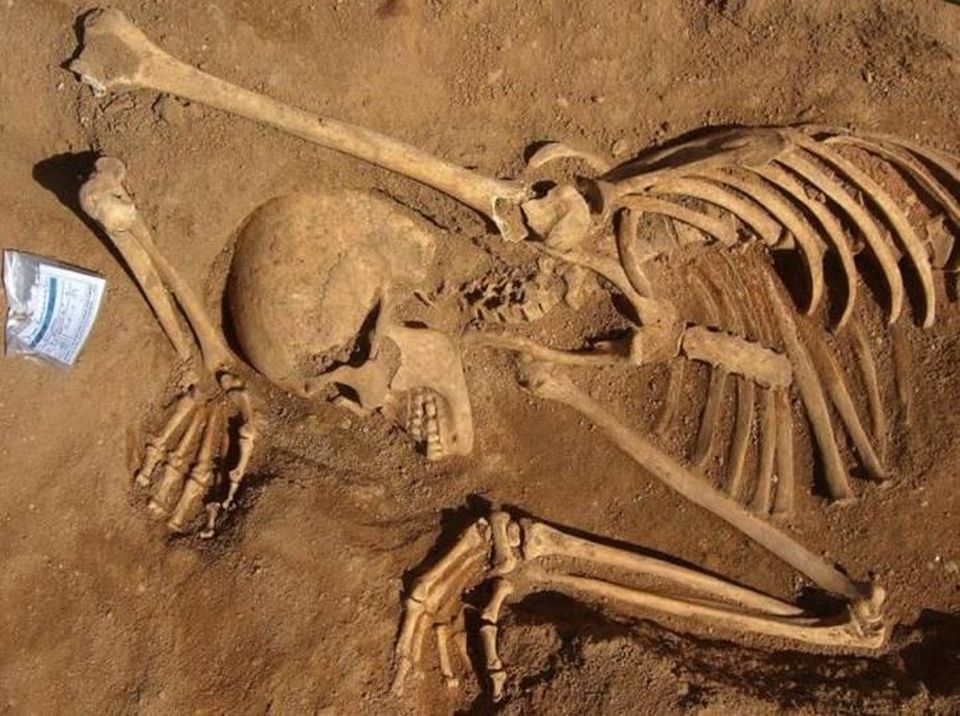In the early 15th century, Portuguese explorers like Henry the Navigator began sailing to Africa, bringing back both goods and enslaved people. A new archaeological study of more than 150 skeletons dumped in Lagos, Portugal, reveals that many of the enslaved Africans were not given proper burials and that several of them may even have been tied up at death.
The skeletons come from the site of Valle da Gafaria, which was located outside the Medieval walls of the port city of Lagos along the southwest coast of Portugal. Used between the 15th and 17th centuries as a dumping ground, the site also offered up remains of imported ceramics, butchered animal bones, and a few African style ornaments. When the human skeletons were first analyzed, their shape and unique dental style suggested they may have been of African origin, and a later genetic analysis confirmed ancestry with southern African, Bantu-speaking populations. Due to the archaeological and historical information, it is likely that all of these people were enslaved.
In a new research article published in the International Journal of Osteoarchaeology, Maria Teresa Ferreira, Catarina Coelho, and Sofia Wasterlain of the University of Coimbra dug further into the bone data in order to understand how the 158 enslaved Africans came to be buried in a trash pit in Lagos. Specifically, they investigated the position of each burial, whether or not the burial was made with care, and whether they could identify any evidence that the person’s body had been bound.
Ellen Chapman, a bioarchaeologist and cultural resources specialist at Cultural Heritage Partners, also told me that she looks forward to further work on this site and this collection of skeletons because “this site is an incredibly disturbing one, and one that clearly illustrates the pervasive mistreatment of enslaved people by the architects of the trans-Atlantic slave trade.” In particular, Chapman notes that “this skeletal collection is indicative of the high mortality associated with slave ships and the Middle Passage.”
Read the entire article at Forbes.
Image: Adult female skeleton found at Valle da Gafaria, Portugal, suggests a careless burial. M.T. SANTOS FERREIRA
